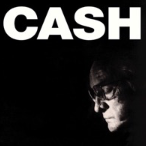All Activity
- Past hour
-
-
Tech layoffs seem like a huge reason why people would do this. Having 2 jobs means if you lost one you'd get a package and still have a job.
-

Insurance Brokers (MMC, AON, AJG, WTW, BRO)
Spekulatius replied to tnathan's topic in General Discussion
I personally think after looking at all of the them that BRO and AJG are the best picks here. I only have a small position in BRO bought a bit more than a year ago and it’s as close to a neversell than you can get. -
The tool market volatility is extremely low (VIX is at 13.5 and had been low for a while) , but the volatility in individual names can be very high as earnings misses get punished harshly and earnings beats rewarded handsomely. I think the latter may be a result of option activity.
-
VSTS was a margin improvement and debt paydown story from the spin. Now it looks again like the spinoff was oversold and my guess is that they may have to sacrifice some margin to keep the topline from falling. The CC brought new information to light that they have customer retention issues which to me sounds like a combination of service issues and pricing. This was not dixlosed before. They need to work this out to prevent the topline from imploding (which is the real risk here). At least, I am not paying a fancy multiple here and if the story works out LT, then I still think we could see a multibagger here. I think @Dinar owns the stock too and may have further insight.
- Today
-
@gamma78 and @valueinvesting101 great comments. Thanks for chiming in. I do find it interesting how aggressive Fairfax has been since 2018 in buying back Fairfax’s stock. Yes, Fairfax got the stock at a crazy low price. But this also has the effect of shrinking the size of the company. I like this - as we have learned with Berkshire, ever-increasing size eventually becomes a constraint on returns. Keeping Fairfax small (relatively) should help Fairfax deliver above average returns moving forward. Great points on India. Is the set-up today in India like the US back in the 1950’s? Buy a basket of ‘quality at a fair price’ and hang on for decades? Interesting idea. I have been a little bit surprised how quiet Fairfax has been in India the past couple of years. Their playbook there has been monetizing assets, increasing their ownership of BIAL and building cash. Like a spring getting loaded?
-
Agree Valaris is looking good here. Fcf starting to roll in.
-
Little more Valaris. Trading at ~20-25% of of replacement, new contracts really starting to rollover, committed (supposedly) to returning all FCF to shareholders...and there's lots of it. Probably should buy a basket, but I like the size and quality of fleet vs competitors and the fact VAL isn't leveraged like the others. We'll see how this works out over the next decade.
-
I know people in tech that do this. If you're good, you can find $200-300k TC jobs that are remote and only have 20 or so hours of "real" work weekly. Jobs with TC closer to $100k and low stress/workload are even more plentiful. Of course, tech layoffs are a real risk here.
-
Difference between Berkshire and Fairfax investment style seems to be that Fairfax is more willing to bet on turnaround or new business even at times following old business model such Digit or EuroBank or may be IDBI. Berkshire has gone after KO, AXP, WFC, Geico, Sees which were started decades or centuries before Berkshire established position into them. Buffett often mentions stories about KO about something that happened 1920/1940, having that history gives him more evidence of how company/brand/business model navigated threat of competition over that time period. I wish Fairfax would take a look at existing proven compounder in India and elsewhere when they are available at cheaper valuation due to short-term factors while maintaining longer term moats. Similar to salad oil of AXP or mid 2010s competitive threats to Apple. HDFC Bank and Kotak Mahindra Bank come to my mind as proven compounder in India in financial space with proven history of long term compounding but currently available at decadal low valuation instead of or in addition to pursuing turnaround/control play such as IDBI. Even for turnarounds, IDFC First/IDFC were turnaround story in India with decent margin of safety in last 2-3 years. I always felt it was very much in the circle of competence of Fairfax and similar to lot of other investments they have made.
-
Vestis looks like a debt paydown story. They are doing some cost cutting which may or may not work, but I imagine the real story is paying down all the debt they are saddled with post-spin. That value will accrue to equity holders over time.
-
I think its singular that Prem actually called out the lesson he says he learned from Munger in the AGM, meaning that finding compounders you don't touch for a very long time is important. The reality is that as Fairfax grows their capability to turn over their equity portfolio and consistently find new winners will decrease very very very rapidly due to sheer size. And that will mean that finding companies that retain earnings and compound at high rates for long periods of time with no further intervention will be a necessity for sustained growth. That is the genius of the BRK model, beyond the leverage. "never interrupt compounding unnecessarily" was Charlie's rule. I would certainly accept the point that compounders are somewhat seen retrospectively - with survivorship bias. And in this regard BRK's compounders are obvious today and were less so 20-25-30 years ago. Even Buffett himself says that ultimately his returns are largely dependent on only a handful of investment decisions held for a long time. And holds up Sees Candies as a company that - beyond its current worth in the books - has spun literally bilions in cash used elsewhere. Some traits though - capital light, significant reinvestment opportunity with high returns on capital - should be visible immediately. Where do we see businesses like that in the Fairfax portfolio? Eurobank is a brilliant decision over last 5 years, and banking can be a good business when well run. Poseidon? Does that have high ROC across a cycle for good? CIB? Doesn't sound the same. I am intrigued by the expanding investments in India. That sounds a bit more like what in retrospect 30 years from now looks like "long term compounders". BIAL and India airports in general are a generational opportunity. Prem has clearly said that banking / financial services in India should grow at rates well above GDP growth. That sounds to me like signalling that Fairfax India and indian investments have an outsized role to play. I know that on a retrospective basis things won't look like KO, AAPL, MCO, AXP. But the question is, what do we think the equivalent will be? To me it looks like Prem believes India is a big contributor to continuous compounding.
-
Bought some VSTS yesterday and today. just another spinoff that runs into trouble, but uniform rental fundamentally a good business, so I think this should be fixable. High leverage (from spin) is a concern.
-
When I wrote here on CoBF about the Swedish Real Estate Crisis evolving last year, I felt confident both CAST and BALD already then were in deep trouble with regard to their financings looking forward. It seems both companies so far have steared clear of troubled and unsuccessful refinancings, triggering forced and uncontrolled massive assets sales, however it's not over yet. The effort here for my part is over time to build a modest basket of a portfolio of Scandinavian listed real estate companies with a low entry point, for the purpose of holding it for the long term.
-
Catalyst Bancorp (CLST) isn't a particularly well positioned or well run bank. But (i) it's overcapitalized, (ii) in October it will be 3 years post-conversion, (iii) it has been and continues to sell at a significant discount to book, (iv) it has consistently bought back shares and just authorized another repurchase, and (v) the CEO owns some shares and would get ~$1 million in change of control payments. Most of the points above can be seen in yesterday's earnings release: https://catalystbank.investorroom.com/2024-05-02-Catalyst-Bancorp,-Inc-Announces-2024-First-Quarter-Results-and-Approval-of-New-Share-Repurchase-Plan
-

Buffett/Berkshire - general news
John Hjorth replied to fareastwarriors's topic in Berkshire Hathaway
Right now, @Spooky, I really can't come up with a central and gathering place as a goog place to read and study where and what NICO is in the total Berkshire over time and today. It's almost as a shadow and very private holding company that is likely the most important subsidiary of the public and listed holding company Berkshire Hathaway. In my early years I did spend enormous amounts of time studying all kinds of Berskhire-related stuff, all while also building the position, and NICO did pop up basically all over the place. -
Why? ty
-
Agree with this - it seems like a decent gauge of the "animal spirits" in the market.
-
I wouldn’t have a problem with it. I don’t sell my time by the hour because it caps my potential. You want something done, you pay for it. Not some idea of how long you own somebodys time for.
-
Buffett/Berkshire - general news
longterminvestor replied to fareastwarriors's topic in Berkshire Hathaway
2 corollaries on concept of float value in higher interest rate environment to note: - increased competition for float ie lower premiums because of competition - reduced underwriting margins due to lower premiums Great summary, thanks Viking! -
Started with small positions today in : BALB B.STO [Fastighetsbolaget Balder AB, ser. B, Göteborg, Sweden], & CAST.STO [Castellum AB, Stockholm, Sweden]. I may change my mind about them and sell them at any moment, thereby considering the buys of them errors.
-
There is a hypothesis that liquidity needs determines short term price action. When more people need cash than they need more savings, general market prices will decline as sellers outnumber the buyers. When the inverse is true it will rise. And there is a corollary that when liquidity is high money first flows to the most speculative investments because their values are less knowable, at the same time investors are flush and more willing to gamble. For example most won't overpay for GM because its long record gives good reason to believe it will trade in a relatively tight earnings multiple range. But those people may happily overpay for Tesla because its much shorter track record demonstrates that it can trade at almost any multiple. So crypto is like the ultimate expression of that theory, without any binding valuation metrics to hold it down and a history replete with massive bull runs, its catnip for investors flush with cash looking for outsize returns. If these hypothesis are true, they also work in reverse. When liquidity tightens, people sell the most speculative positions first, so crypto and tech stocks would trail the market. Not sure how well the data actually matches these hypothesis, the real world is complex and messy with millions of independent agents making independent decisions and being driven by other factors besides a simplistic liquidity == gamble-gamble mental model. So it would be surprising if the effect was so strong to be irrefutable, but anecdotally there is plenty of evidence that can be cherry picked post hoc to support it FWIW.
-
TD



